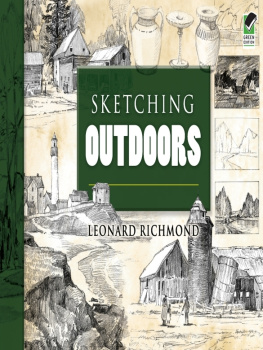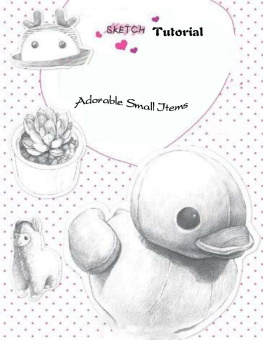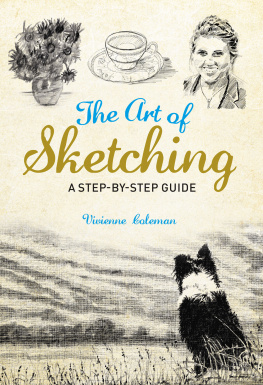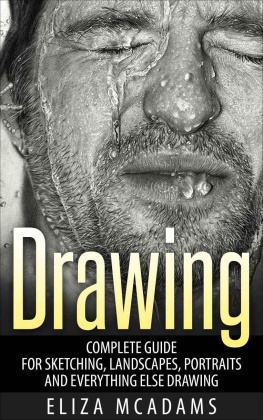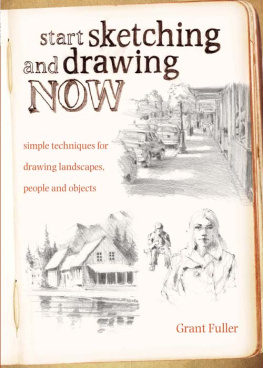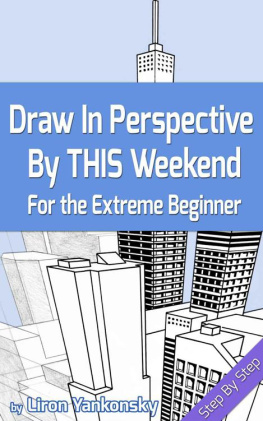HOW TO SKETCH LANDSCAPES
Beginner's Drawing Tips & Quick Landscape Sketching Exercises
By
Liron Yanconsky
HOW TO SKETCH LANDSCAPES: Beginner's Drawing Tip & Quick Landscape Sketching Exercises
Copyright 2015 Liron Yanconsky
Published: December 2015
All rights reserved. No part of this publication may be reproduced, stored in retrieval system, copied in any form or by any means, electronic, mechanical, photocopying, recording or otherwise transmitted without written permission from the publisher. You must not circulate this book in any format.
This book is licensed for your personal enjoyment only. This ebook may not be resold or given away to other people. If you would like to share this book with another person, please purchase an additional copy for each recipient.
Thank you for respecting my hard work.
Kindle Edition
Thank you for purchasing my book.
As a token of my appreciation, I want to give you my beginner's guide to sketching, for FREE!
GET IT HERE!

Table of Contents
1 Introduction
Hey there! Welcome to HOW TO SKETCH LANDSCAPES.
My name is Liron, and I have been drawing ever since I can remember myself.
I was always fascinated with looking at things and sketching them, and my school notebooks were always filled with more sketches than school related stuff.
HOW TO SKETCH is a quick guide for sketching landscapes, that also includes some valuable advice regarding drawing in general.
If you want to get straight to the exercises, skip to part 4. If you are a beginner however, I do recommend, at the very least, skimming through the beginning of the book.
I am a big believer in the "Anyone can do it" approach, and I promise you that if you follow the instructions in this book, you will be well on your way towards achieving your art-related goals.
I am super excited to have the opportunity to be your teacher, and can't wait for us to start our journey together.
So without further ado, let's begin!
Truly yours,
Liron Yanconsky,
Artist & Published author
LironYan.com
2 What is a Sketch?
This may be obvious to many people, but let's begin with the definition of a sketch both the dry definition, and MY definition.
Here is Wikipedia's definition:
"A sketch is a rapidly executed freehand drawing that is not usually intended as a finished work.
A sketch may serve a number of purposes: it might record something that the artist sees, it might record or develop an idea for later use or it might be used as a quick way of graphically demonstrating an image, idea or principle."
Okay, you got that down?
A sketch is a drawing. It can be simple or complicated. Light or dark. Fast or slow. What really makes it a sketch is that it's usually not intended to be a finished work.
Any time you doodle in your notebook, feel free to call it a sketch. If you find yourself looking at an object, passing the time while drawing it, it's a sketch. If you want to practice drawing, and you do that by creating quick, simple drawings, feel free to call these sketches too.
A sketch can be as beautiful and as impactful as a final, finished, complete drawing.
In fact, many times I find sketches even MORE fascinating than finished drawings. The reason for this is that a sketch is more of a window to the artist's mind. It's what he drew without being concerned about what other people might think or how perfect and complete it should be.
To me, this is more exciting than looking at a finished work.
In addition, a sketch can be as simple as few lines, or very complicated and intricate.
Here is an example of a very simple sketch of a penguin.

As you can see, this is a relatively rough sketch. I did put a lot of effort into making it as accurate as possible, but it's still simple, rough and sketchy. You don't have an infinite amount of time when trying to sketch a moving animal.
Here is an example of a more intricate sketch.

This is a little more detailed sketch of an old building's wall. This sketch was a lot more time consuming than the penguin. I didn't get all the lines to be perfectly accurate, and the perspective may be a bit off, but I am pleased with the gist of it.
Both of these examples are beautiful in my opinion, as they show the process of portraying reality on the paper, in a very raw and lively way.
Sketching lets you draw many different things, while committing only to whatever you choose. You can create many simple sketches, and further develop the ones you choose. Also, this is one of the best ways to practice drawing in general, as well as improving your visual skills, as we will soon see.
And above all sketching is a lot of fun!
So... we will now move on to the next part, and learn about the Inner Game (the mental side) of improving our sketching skills.
3 Inner Game: Sketching With Your Brain
In this part, we will talk about the concepts and mental side of learning how to become better at sketching.
It is important to understand that in addition to your hands, it is your brain that sketches as well. Your brain controls your hands, and is an important part of the sketching process. Anyone can train their mind and thus improve their visual intelligence.
When this understanding sinks in, you will also better understand why I am a big believer in the Anyone can do it approach.
Part 3 is going to be mostly theoretical. If you really want to start sketching right away, feel free to skip to part 4 (or 5 to get directly to the sketching exercises).
However, I strongly advise you not to skip this part , as it contains the (crucial) blueprint for learning how to sketch (and draw in general). If you do choose to skip to part 4, be sure to come back later and read this part as well, for a nice closure.
a. The Correct Mindset
So here's the deal: learning how to sketch is just like learning how to draw, or how to sing, or how to become a bodybuilder. All it takes is practice. A LOT of practice.
They say it takes ten thousand hours of practice to master a skill-set. This can spread over as much as 3-6 years. But it doesn't mean you aren't going to become really good FAST.
So the bottom line is this: practice.
Practice anywhere, anytime, and as much as you can. Carry with you a small sketching notebook, and whenever you see something interesting, sketch it!
Don't worry if you don't know where to begin yet, or how to actually do it. We will talk about everything in the near future. For now, just try and soak up the gist of my advice.
By constantly practicing, you will get better, and you'll start developing curiosity and a willingness to take up challenges.
Another important mindset to have, is that of giving yourself credit and taking it easy. Learning a new skill-set is a challenge. It requires your brain to work. So don't worry if the beginning is hard, or if you don't get the result you want right away.
Take it with baby steps, and give yourself credit for even small success you will make progress!
Trust your ability to improve, and improvement will come.
Next page

